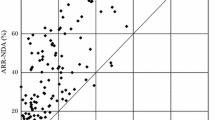Abstract
The issue of safety evaluation on postmarketing Chinese medicines has become a hot topic in mainland China recently. Researchers and decision-makers can obtain a variety of evidence resources about safety in order to evaluate the safety profile for postmarketing Chinese medicines. A registry study on ten Chinese medicine injections for postmarketing surveillance has come to the end. From such a study observing more than 300,000 patients for more than 4 years, a theoretical research question emerges, that is, how to identify and evaluate safety evidence systematically. We put forward a brand new research paradigm on the theory level, which is to establish a body of evidence on safety evaluation for postmarketing Chinese medicine. Therefore, multiple information sources were explored and extracted from preclinical experiments for toxicity, postmarketing clinical trials for effificacy and safety evaluation, registry study for surveillance, retrospective data analysis from hospital information system and spontaneous response system, and case reports and systematic review from literature. Greater efforts for this idea and cooperation with experts in this fifield both in China and abroad are urgently needed.
Similar content being viewed by others
References
OCEBM Levels of Evidence Working Group. Oxford Centre for Evidence-Based Medicine 2011 Levels of Evidence. [2016-11-10]. Available at: http://www.cebm.net/wp-content/uploads/2014/06/CEBM-Levels-of-Evidence-2.1.pdf.
Gordon HG, Andrew DO, Gunn EV, Regina K, Yngve FY, Pablo AC, et al. GRADE: an emerging consensus on rating quality of evidence and strength of recommendations. BMJ 2008;336: 924–926.
Murad MH, Asi N, Alsawas M, Alahdabnew F. New evidence pyramid. Evid Based Med 2016;21: 125–127.
Milano G. The hierarchy of the evidence based medicine pyramid: classification beyond ranking. Joints 2015;3: 101.
Liliane Z, Yoon KL, John PI, Su G, Pasqualina S, Douglas GA, et al. PRISMA harms checklist: improving harms reporting in systematic reviews. BMJ 2016;352: 1–17.
Sun SG. Report on species of traditional Chinese medicine injections postmarket in China. Chin Hosp Pharm J (Chin) 2015;35: 369–374.
Liao X, Nicola R. Methodological approaches to developing and establishing the body of evidence on post-marketing Chinese medicine safety. Chin J Integr Med 2013;19: 494–497.
Zhang N, Lu AL, Wang G, Chen G, Dang Q, Pei YH. Chemical constituents of Ixeris sonchifolia (Bge.) Hance. J Shenyang Pharm Univ (Chin) 2007;24: 549–551.
Faraoni D, Schaefer ST. Randomized controlled trials vs. observational studies: why not just live together? BMC Anesthesiol 2016;16: 1–4.
Cortinovis M, Perico N, Remuzzi G. Should we still believe in randomized controlled trials in nephrology? Nephronoly 2016:1–6
Feng YS, Gui LH, Xu SM, Li YF, Zhang HW, Zhao HW. Studies on the activity of fibrinolysin and toxicity of Ixeris sonchifolia Hance. J Shenyang Coll Pharm (Chin) 1981;13: 23–29.
Mashour GA, Shanks AM, Kheterpal S. Perioperative stroke and associated mortality after noncardiac, nonneurologic surgery. Anesthesiology 2011;114: 1289–1296.
van Poucke S, Thomeer M, Heath J, Vukicevic M. Are randomized controlled trials the (g)old standard? from clinical intelligence to prescriptive analytics. J Med Internet Res 2016;18: 4–14.
World Health Organization. WHO-adverse reaction terminology (WHO-ART). [2016-11-10]. Available at: http://www.umc-products.com/graphics/3149.pdf.
McClellan M. Drug safety reform at the FDA—pendulum swing or systematic improvement? N Engl J Med 2007;356: 1700–1702.
Hazell L, Shakir SA. Under-reporting of adverse drug reactions: a systematic review. Drug Saf 2006;29: 385–96.
The use of the WHO-UMC system for standardised case causality assessment. [2016-11-10]. Available at: http://www.who-umc.org/graphics/24734.pdf.
Antje N, Harald D, Hans-Ulrich P, Thomas B, Wolfgang R, Reinhold S, et al. E-pharmacovigilance: development and implementation of a computable knowledge base to identify adverse drug reactions. Br J Clin Pharmacol 2013;76: 69–77.
Gliklich RE, Dreyer NA, Leavy MB, eds. Registries for evaluating patient outcomes: a user’s guide. 3rd ed. Rockville (MD): Agency for Healthcare Research and Quality (US); 2014:93
Brighton B, Bhandari M, Tornetta PR, Felson DT. Hierarchy of evidence: from case reports to randomized controlled trials. Clin Orthop Relat Res 2003;413: 19–24.
Abu KN, Abdullah B, Manikam J. The current status of the case report: terminal or viable? Biomed Imag Interv J 2009;5: 1–4.
Lécutier MA. Phocomelia and internal defects due to thalidomide. BMJ 1962;2: 1447–1448.
Moss P. Whither the case report? J Infect 2008;57: 93–94.
Rosselli D, Otero A. The case report is far from dead. Lancet 2002;359: 84.
Trisha G, Jeremy H, Neal M, for the Evidence Based Medicine Renaissance Group. Evidence based medicine: a movement in crisis? BMJ 2014;348:g3725.
World Health Organization, Quality Assurance and Safety of Medicines Team. Safety of medicines. A guide to detecting and reporting adverse drug reactions: why health professionals need to take action. 2002. [2016-11-10]. Available at: http://apps.who.int/iris/bitstream/10665/67378/1/WHO_EDM_QSM_2002.2.pdf.
GRADE Working Group, GRADE Handbook. [2016-11-10]. Available at: http://gdt.guidelinedevelopment.org/app/handbook/handbook.html.
Liu JP. The composition of evidence of traditional medicine and recommendations for its evidence grading. Chin J Integr Med 2007;27: 1061–1065.
Liao X, Xie YM, Wang YY, Robinson Nicola. To explore evidence evaluation for harm: establishing the body of evidence for harm for postmarketing traditional Chinese medicine. China J Chin Mater Med (Chin) 2015;40: 4723–4727.
Naranjo C, Busto U, Sellers EM. A method for estimating the probability of adverse drug reactions. Clin Pharmacol Ther 1981;30: 239–245.
Author information
Authors and Affiliations
Corresponding author
Additional information
Supported by the Ninth-Science Foundation of Institute of Basic Research in Clinical Medicine, China Academy of Chinese Medical Sciences (No. Z0406), the Seventh Science Foundation of China Academy of Chinese Medical Sciences (No. ZZ070817), National Natural Science Foundation of China (General Program, No. 81202776) and China Postdoctoral Science Foundation project (No. 2014T70202)
Rights and permissions
About this article
Cite this article
Liao, X., Xie, Ym., Robinson, N. et al. To establish a body of evidence on safety for postmarketing Chinese medicine: A new research paradigm. Chin. J. Integr. Med. 23, 226–232 (2017). https://doi.org/10.1007/s11655-016-2534-x
Received:
Published:
Issue Date:
DOI: https://doi.org/10.1007/s11655-016-2534-x




